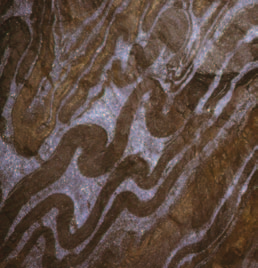Ore-Forming Fluids
Ore-forming (hydrothermal) fluids, consisting largely of H 2O, CO2, and NaCl, formed most of Earth’s ore deposits. The fluids exist as largely unconfined systems in meteoric, seawater, and basinal settings, or locally and intermittently confined systems in magmatic, metamorphic, and basinal settings, and they are driven largely by differences in temperature, elevation or density. Temperatures are highest (~600°C) in magmatic and lowest in basinal and meteoric (~100°C) systems. Salinities well above that of seawater are reached by boiling, evaporation, and evaporite dissolution, largely in magmatic and basinal systems. Today, research is focused on establishing the concentrations of metals in these fluids, the volume and duration of hydrothermal flow, and the links between ore systems and larger, regional fluid systems.
Ore-Forming Fluids Read More »


